 W
WA prison ship, often more accurately described as a prison hulk, is a current or former seagoing vessel that has been modified to become a place of substantive detention for convicts, prisoners of war or civilian internees. While many nations have deployed prison ships over time, the practice was most widespread in seventeenth and eighteenth century Britain, as the government sought to address the issues of overcrowded civilian jails on land and an influx of enemy detainees from the War of Jenkins' Ear, the Seven Years' War and the French Revolutionary and Napoleonic Wars.
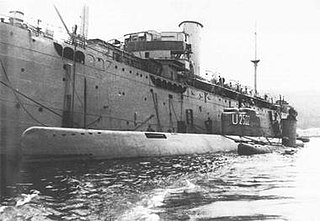 W
WHMS Al Rawdah was a ship of the Royal Navy. She was built in 1911 and originally christened Chenab for the Nourse Line of London.
 W
WHMS Black Prince was a 74-gun third rate ship of the line of the Black Prince class of the Royal Navy, launched on 30 March 1816 at Woolwich Dockyard.
 W
WPrison hulks were decommissioned ships that authorities used as floating prisons in the 18th and 19th centuries. They were especially popular in England. The term "prison hulk" is not synonymous with the related term convict ship. A hulk is a ship that is afloat, but incapable of going to sea, whereas convict ships are seaworthy vessels whose purpose was to transport convicted felons from their place of conviction to their place of banishment.
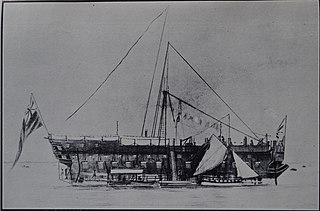 W
WHMS Canada was a 74-gun third-rate ship of the line of the Royal Navy, launched on 17 September 1765 at Woolwich Dockyard.
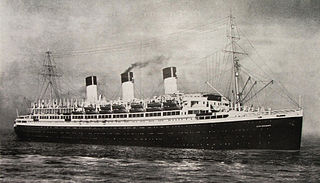 W
WCap Arcona, named after Cape Arkona on the island of Rügen, was a large German ocean liner and the flagship of the Hamburg Südamerikanische Dampfschifffahrts-Gesellschaft. She made her maiden voyage on 29 October 1927, carrying passengers and cargo between Germany and the east coast of South America, and in her time was the largest and quickest ship on the route.
 W
WAt the end of the Chilean Civil War of 1829–1830 the government decided to buy the brigantine-schooner Flora to confront a new attack of insurgents. She was renamed Colo Colo.
 W
WHMS Cornwall was a 74-gun third-rate Vengeur-class ship of the line built for the Royal Navy in the 1810s. She spent most of her service in reserve and was converted into a reformatory and a school ship in her later years. The ship was broken up in 1875.
 W
WHMS Defence was a 74-gun third rate ship of the line of the Royal Navy, launched on 25 April 1815 at Chatham.
 W
WEsmeralda is a steel-hulled four-masted barquentine tall ship of the Chilean Navy.
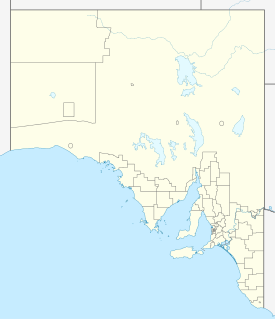 W
WThe Magill Youth Training Centre, also known as the Boys Reformatory, McNally Training Centre and South Australian Youth Training Centre (SAYTC) since its founding in 1869, was the last iteration of a series of reformatories or youth detention centres in Woodforde, South Australia. The centre came under criticism in the 2000s for "barbaric" and "degrading" conditions and was replaced by a new 60-bed youth training centre at Cavan in 2012.
 W
WHMS Ganymede was a British prison hulk which was moored in Chatham Harbour in Kent, England. HMS Ganymede was the former French 450 ton frigate Hébé, which, under command of Lieutenant Bretonneuire, was captured by the British frigate Loire on 6 February 1809 while en route from Bordeaux to San Domingo, carrying 600 barrels of flour.
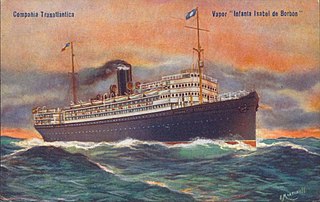 W
WSS Infanta Isabel de Borbon was a steam ocean liner and mail ship launched in 1912 in Scotland and operated by the Compañía Transatlántica Española (CTE). She and her sister ship Reina Victoria-Eugenia represented a significant modernisation of CTE's fleet of ageing and obsolescent ships.
 W
WHMS Investigator was the mercantile Fram, launched in 1795, which the Royal Navy purchased in 1798 and renamed HMS Xenophon, and then in 1801 converted to a survey ship under the name HMS Investigator. In 1802, under the command of Matthew Flinders, she was the first ship to circumnavigate Australia. The Navy sold her in 1810 and she returned to mercantile service under the name Xenophon. She was probably broken up c.1872.
 W
WHMS Jersey was a 60-gun fourth rate ship of the line of the Royal Navy, built to the 1733 proposals of the 1719 Establishment of dimensions at Plymouth Dockyard, and launched on 14 June 1736. She saw action in the War of Jenkins' Ear and the Seven Years' War, before being converted to a hospital ship in 1771. In 1780, she was converted again, this time to a prison ship, and was used by the British during the American Revolutionary War.
 W
WHMS Leven, was a 20-gun sixth-rate post ship of the Cyrus class, for the Royal Navy. She was built in Ipswich, and launched on 23 December 1813. She was notable as the survey ship that mapped large stretches of the coast of Africa in a voyage from 1821 to 1826, under the command of Captain William Fitzwilliam Owen. Leven Point near Cape Vidal in KwaZulu-Natal, South Africa, is named after the ship.
 W
WUSNS Lewis and Clark (T-AKE-1) is an American dry cargo ship, the lead ship of her namesake class. It was the second ship of the United States Navy to be named for the explorers Meriwether Lewis and William Clark. The contract to build her was awarded to National Steel and Shipbuilding Company (NASSCO) of San Diego, California, on 18 October 2001 and her keel was laid down on 22 April 2004. She was launched on 21 May 2005, co-sponsored by Jane Lewis Sale Henley and Lisa Clark, descendants of the ship's namesakes. She was delivered to the Navy on 20 June 2006.
 W
WHMS Maidstone was a submarine depot ship of the Royal Navy. She operated in the Mediterranean Sea, Indian Ocean and Pacific Ocean during the Second World War. She was later used as a barracks ship and then a prison ship in Northern Ireland.
 W
WMarengo was a Téméraire class 74-gun ship of the line of the French Navy.
 W
WMusashi (武蔵) was the third and final vessel in the Katsuragi class of composite hulled, sail-and-steam corvettes of the early Imperial Japanese Navy. It was named for Musashi province, a former province of Japan located in the Kantō region. The name was used again for the more famous World War II battleship Musashi.
 W
WUSS Odum (APD-71), ex-DE-670, was a United States Navy high-speed transport in commission from 1945 to 1946.
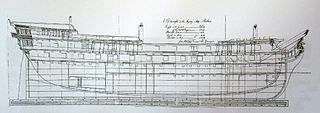 W
WProtée was an Artésien-class 64-gun ship of the line of the French Navy, launched in 1772.
 W
WHMS Racoon, sometimes spelled HMS Raccoon, was an 18-gun ship sloop of the Cormorant class of the Royal Navy. She was built by John Preston, of Great Yarmouth, and launched on 30 March 1808. She sailed as far as Fort Astoria on the Columbia River. She became a hospital ship in 1819 and finally was sold in 1838.
 W
WSS Reina Victoria-Eugenia was a steam ocean liner and mail ship launched in 1912 in England and operated by the Compañía Transatlántica Española (CTE). She and her sister ship Infanta Isabel de Borbon represented a significant modernisation of CTE's fleet of ageing and obsolescent ships.
 W
WHMS Royal Oak was a 74-gun third-rate ship of the line of the Royal Navy, built by Jonas Shish at Deptford and launched in 1674. She was one of only three Royal Navy ships to be equipped with the Rupertinoe naval gun. Life aboard her when cruising in the Mediterranean Sea in 1679 is described in the diary of Henry Teonge.
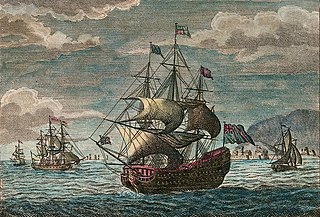 W
WHMS Sultan was a 74-gun third rate ship of the line of the Royal Navy, launched on 23 December 1775 at Harwich. Built to take part in the American Revolutionary War, her departure was delayed due to a shortage of crew and it was 9 June 1778 before she finally sailed as part of a squadron led by Rear-Admiral John Byron. In September she was with Richard Howe's fleet, blockading the French in Boston and in 1779, transferred to the West Indies, where she took part in the Battle of Grenada that July. Almost a year later, on 20 June 1780, she was involved in a short action off the coast of the Dominican Republic with a superior French force.
 W
WThe Tage ("Tagus") was a 100-gun Hercule-class ship of the line of the French Navy.
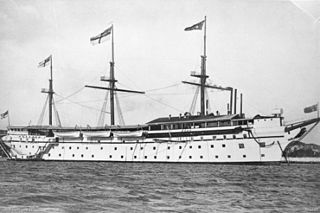 W
WHMAS Tingira was a training ship operated by the Royal Australian Navy (RAN) between 1911 and 1927. Alexander Hall & Co. built the ship in Scotland in 1866 as the passenger clipper Sobraon; she was the largest composite-hull sailing vessel ever built. She sailed on an annual migration run between England and Australia until 1891, when she was sold to the colonial government of New South Wales for use as a reformatory ship. The vessel was then sold to the federal government in 1911, and entered RAN service. Tingira was paid off in 1927, but despite efforts to preserve the ship, was broken up in 1941.
 W
WHMS Vengeance was a 74-gun third rate ship of the line of the Royal Navy, launched on 25 June 1774 at Rotherhithe. By 1780, she was at the island of Martinique, and was driven ashore and damaged at Saint Lucia in the Great Hurricane of 1780 but recovered and made her way to Portsmouth to be repaired. Finished in 1803, the ship was put into reserve before becoming a prison ship in the year 1808.
 W
WThe Vernon C. Bain Correctional Center (VCBC), also known as the Vernon C. Bain Maritime Facility and under the nickname "The Boat", is an 800-bed jail barge used to hold inmates for the New York City Department of Corrections. The barge is anchored off the Bronx's southern shore, across from Rikers Island, near Hunts Point. It was built for $161 million at Avondale Shipyard in Louisiana, along the Mississippi River near New Orleans, and brought to New York in 1992 to reduce overcrowding in the island's land-bound buildings for a lower price. Nicknamed "The Boat" by prison staff and inmates, it is designed to handle inmates from medium- to maximum-security in 16 dormitories and 100 cells.
 W
WHMP Weare was an Adult Male/Category C prison ship berthed in Portland Harbour in Dorset, England. It was the latest in a lengthy history of British prison ships, which included HMS Maidstone, used as a prison during Operation Demetrius in the 1970s, HMS Argenta, in use as a prison in the 1920s, and a long list of British prison hulks dating from the late 18th-century to the mid 19th-century.
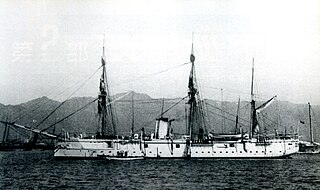 W
WYamato was the second vessel in the Katsuragi class of three composite hulled, sail-and-steam corvettes of the early Imperial Japanese Navy. It was named for Yamato province, the old name for Nara prefecture and the historic heartland of Japan. The name was used again for the World War II battleship Yamato, commissioned in 1941.
 W
WHMS York was a 74-gun third-rate ship of the line of the Royal Navy, built at Rotherhithe by the contract firm Samuel & Daniel Brent, and launched on 7 July 1807. She saw service during the Napoleonic Wars, though is best known for her time spent as a prison ship. She was broken up in March 1854.